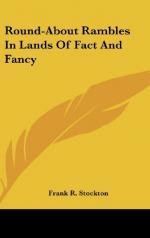[Illustration: GIANT TREES OF CALIFORNIA.]
Everything is lovely and luxuriant here, but it will not do to stay too long. There are fevers and snakes.
Let us now go to the greatest woods in the whole world. I do not mean the most extensive forest, but that one where the trees are the grandest. This is the region where the giant trees of California grow.
Nowhere on the face of the earth are there such trees as these. Some of them stand over four hundred feet high, and are thirty feet in diameter!
Their age is believed to be about eighteen hundred years. Think of it! They have been growing there during the whole of the Christian era!
One of them, the very largest of all, has been lying on the ground for about one hundred and fifty years. When it was standing its diameter was about forty feet.
Another trunk, which is lying on the ground, has been hollowed out by fire, and through this great bore or tube a whole company of horsemen has ridden.
One of these trees was cut down some years ago by a party of men, who, I think, should have been sent to prison for the deed. It took five men twenty-five days to cut it through with augers and saws, and then they were obliged to use a great wedge and a battering-ram to make it fall.
These are the kings of all trees. After such a grand sight, we will not want to see any more trees to-day, and we will leave the forests of Far-away and sit and think of them under our humble grape-vines and honeysuckles.
BUILDING SHIPS.
[Illustration: BOAT BUILDING.]
It is a grand thing to own great ships, and to send them over the ocean to distant countries; but I will venture to say that few men have derived so much pleasure from their fine vessels, laden with all kinds of valuable freight, as many a boy has had in the possession of a little schooner, which would be overloaded with a quart of chestnuts. And it is not only in the ownership of these little crafts that boys delight; they enjoy the building of them quite as much.
And a boy who can build a good ship is not to be laughed at by any mechanic or architect, no matter how tall or how old he may be.
The young ship-builder who understands his trade, when he is about to put a vessel on the stocks—to speak technically—first makes up his mind whether it is to be a ship, a schooner, a sloop, or merely a sail-boat, and determines its size. Then he selects a good piece of solid, but light wood, which will be large enough for the hull. Pine is generally used; but if he can get a piece of well-seasoned white willow, he will find it to work very easily. Then he shapes his hull with knife and saw, according to the best of his ability. On this process the success of the whole undertaking depends. If the bottom is not cut perfectly true on both sides, if the bow is not shapely and even, if the stern is not rounded off and cut up in the orthodox fashion, his ship will never sail well, no matter how admirably he may execute the rest of his work. If there is a ship or boat builder’s establishment anywhere within reasonable walking distance, it will well pay our young shipwright to go there, and study the forms of hulls. Even if he should never build a ship, he ought to know how they look out of the water.




